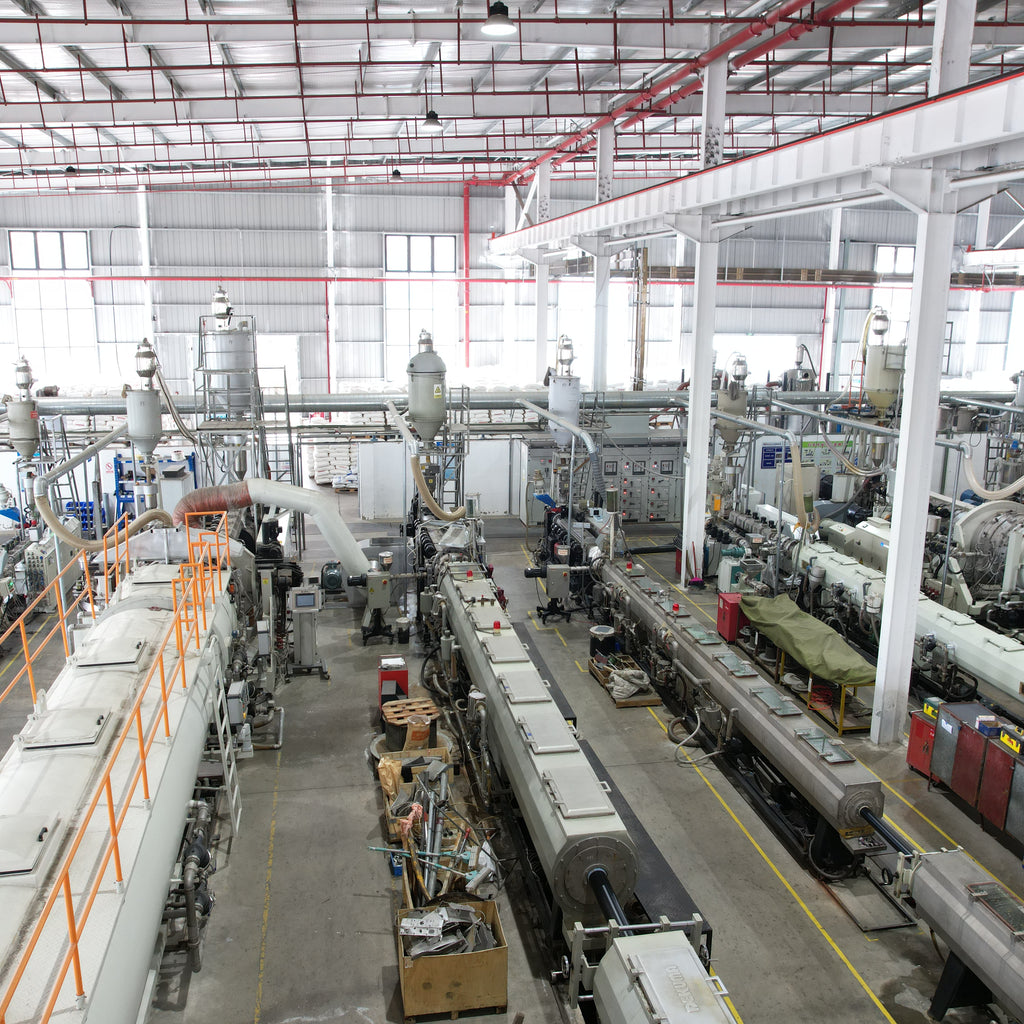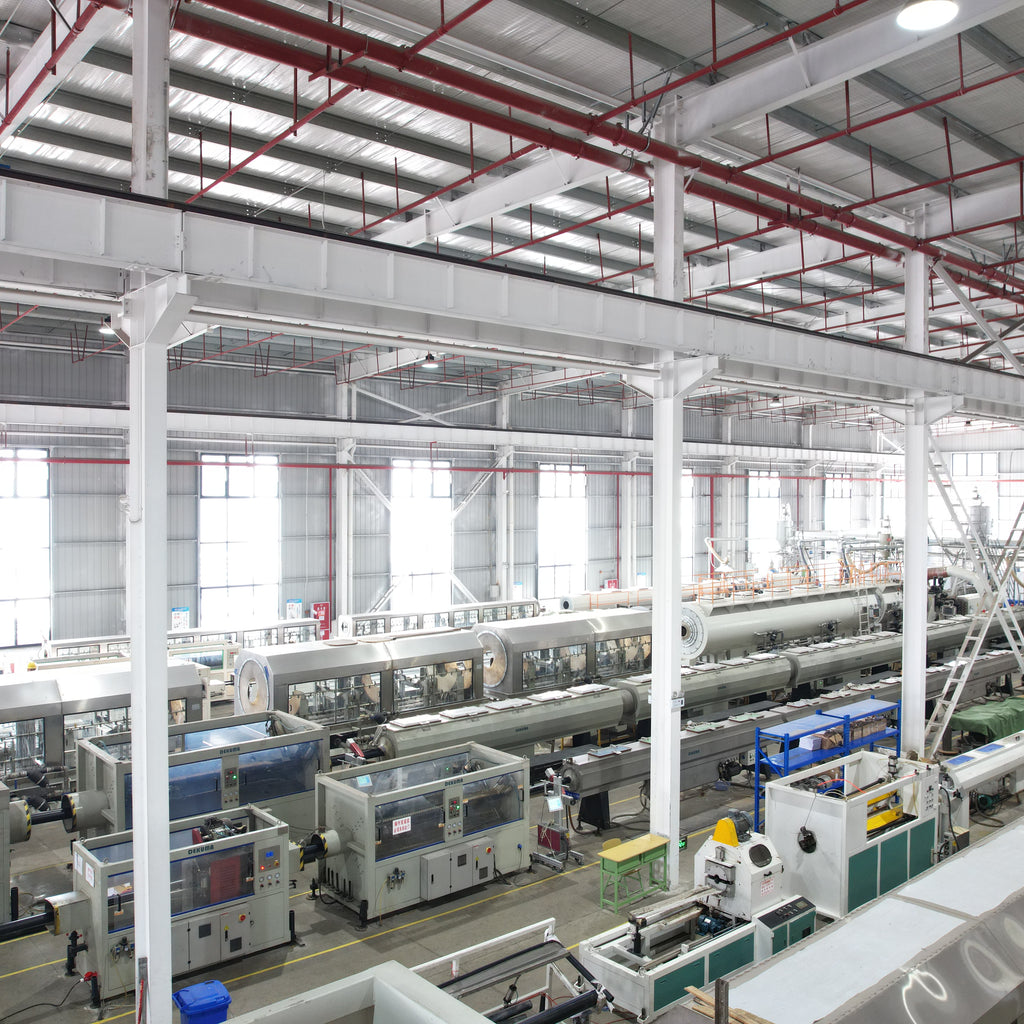In-depth analysis of impact-resistant materials for tunnel escape pipe--Scientific decision-making guide for engineering selection
First, the life and death of 0.8 seconds: the engineering code of anti-impact performance
(Dynamic chart: impact energy absorption curve of different materials)
1.1 Impact dynamics revealed
When a 1-ton weight hits a pipe at a speed of 9m/s, the material needs to complete the energy transformation within 0.8 seconds:
Elastic deformation stage (0-0.2 seconds): molecular chain stretching to absorb the initial kinetic energy
Plastic deformation stage (0.2-0.5 seconds): the microstructure of the material undergoes orderly destruction.
Fracture failure stage (0.5-0.8 sec): crack extension leading to structural collapse
1.2 Temperature-impact toughness Rubik's cube diagram
(Three-dimensional model to show the material properties with temperature change law)
Material type -40℃ impact value 25℃ impact value 60℃ impact value
Ordinary HDPE 18kJ/m² 35kJ/m² 28kJ/m²
Modified UHMW-PE 52kJ/m² 85kJ/m² 73kJ/m²
Carbon fiber composite material 68kJ/m² 92kJ/m² 89kJ/m²
1.3 Industry Pain Points
Brittle fracture of HDPE pipes in a plateau tunnel project due to neglect of -30℃ low temperature environment
A coastal project did not consider salt spray corrosion, carbon fiber interlayer peeling speed up 300% faster
Second, the materials laboratory: penetrate the fog of the data of the battle for the truth
2.1 Full record of drop hammer impact test
(Video split-screen comparison of three materials destruction process)
HDPE pipe: radial cracks appear on the surface (energy absorption rate of 62%)
UHMW-PE pipe: depression formed but not penetrated (energy absorption rate 89%)
Carbon fiber composites: spider web diffusion at impact points (energy absorption rate 94%)
2.2 Microstructure electron microscope analysis
Ordinary HDPE: obvious spherical crystal structure, clear grain boundaries (Figure A)
Modified UHMW-PE: interpenetrating lamellar crystal structure (Figure B)
Nano-reinforcement layer: carbon fiber and resin form a mechanical interlock (Figure C)
2.3 Ten-year aging simulation test
(Comparison of accelerated aging test data)
Performance index HDPE retention rate UHMW-PE retention rate Carbon fiber retention rate
Impact Strength 58% 82% 91
Tensile Modulus 67% 88% 95
Surface Scratch Resistance 43% 76% 89
Third, engineering selection decision tree: five-dimensional evaluation model
(Interactive decision flow chart)
3.1 Geological Risk Matrix
Risk level Rockburst frequency Recommended materials
Grade Ⅰ >3 times/year Carbon fiber + steel skeleton composite pipe
Grade Ⅱ 1-3 times/year UHMW-PE reinforced
Class III <1 time/year Modified HDPE
3.2 Life Cycle Cost Calculator
(Input tunnel length/design years to automatically generate comparison scenarios)
Example: 5km tunnel/20 years operation period
HDPE: Initial cost 1.2 million, maintenance cost 2.8 million.
UHMW-PE: Initial cost 2 million, maintenance cost 1.5 million.
Carbon fiber solution: initial cost of 3.5 million, maintenance costs of 600,000
3.3 Connection technology revolution
Traditional flange connection: 12 procedures/40 minutes/leakage rate>3%.
X-type snap system: 3-step operation / 5 minutes / airtightness of 99.8%
Fourth, cutting-edge technology white paper: redefine the industry standard
4.1 Beehive Energy Dissipation Structure
Hexagonal cell size optimized to 8mm
Shock wave propagation path extended by 37%
Energy absorption density increased to 5.8J/cm³.
4.2 Intelligent Early Warning System
Distributed fiber optic sensor network
Damage localization accuracy ±15cm
92% accuracy of big data warning model
4.3 Emergency rapid deployment system
Modularized design: single section of pipe ≤80kg
Slide rail assembly technology: construction efficiency increased by 5 times
Night reflective marking: Visible distance extended to 300m.
V. Engineering Case Bank
5.1 A special long tunnel of Sichuan-Tibet Railway
Challenge: 4500 meters above sea level / annual temperature difference of 70 ℃ / Ⅳ rock explosion
Solution: carbon fiber composite pipe + intelligent monitoring system
Achievement: Successfully resisted 12 rock explosion impacts and reduced maintenance costs by 65%.
5.2 Guangdong, Hong Kong and Macao Cross-sea Tunnel Cluster
Challenge: High humidity/chlorine ion corrosion/ship impact risk
Innovative application: UHMW-PE nano-coating + sacrificial anode protection
Sample Block Quote
Nam tempus turpis at metus scelerisque placerat nulla deumantos sollicitudin delos felis. Pellentesque diam dolor an elementum et lobortis at mollis ut risus. Curabitur semper sagittis mino de condimentum.



